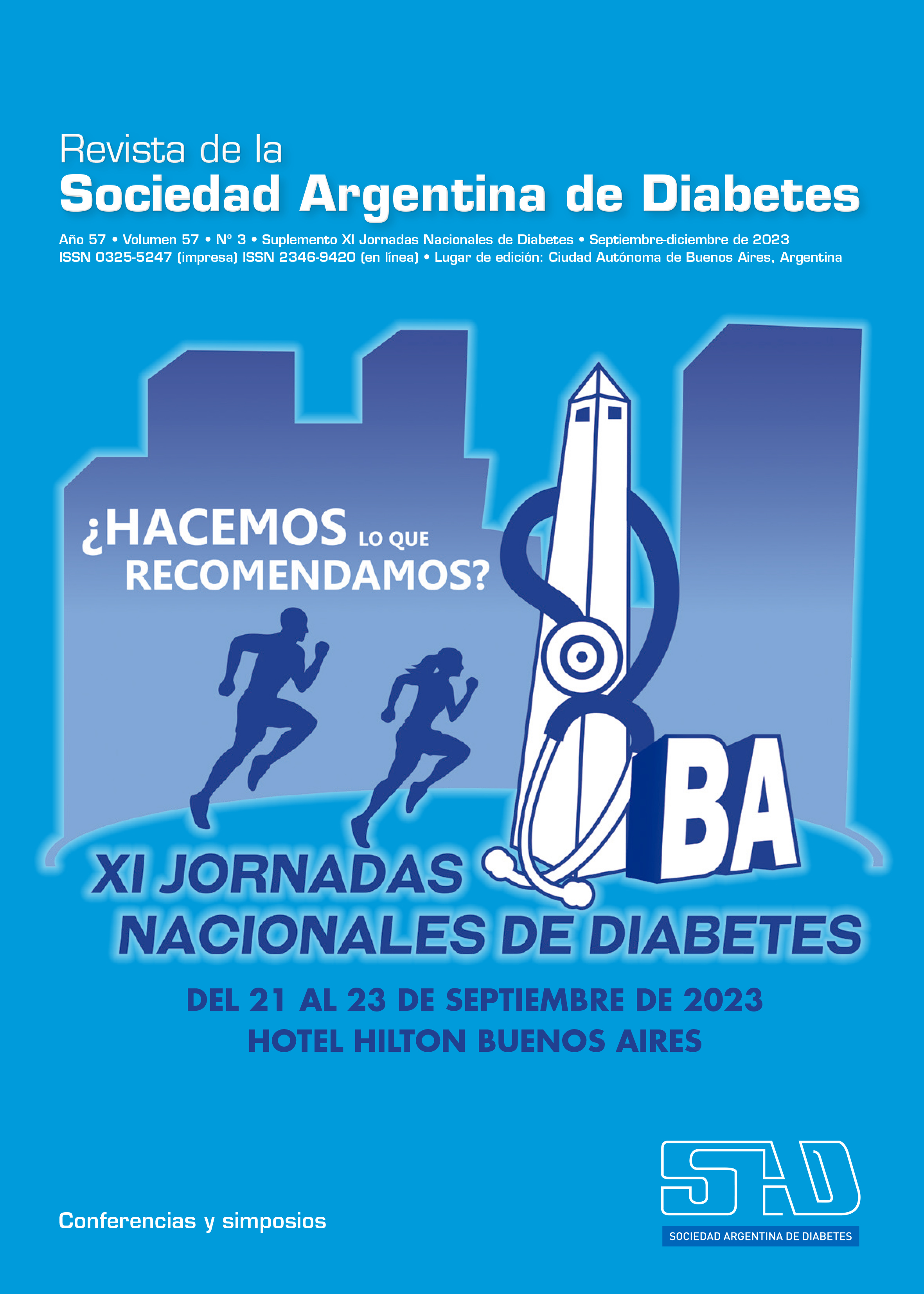Access to Diabetes Care in Uruguay
DOI:
https://doi.org/10.47196/diab.v57i3Sup.641Keywords:
medical care, diabetes, uruguayAbstract
Non-communicable diseases (NCDs) are the leading cause of morbidity and mortality in the world. Diabetes is one of the four major types of NCDs (with cardiovascular disease, cancer and chronic respiratory diseases) and represents a global burden, particularly in low-middle income countries.
In 2013, the Ministry of Public Health (MSP) conducted an NCDs national risk survey, reporting a 6.0% prevalence of diabetes between the ages of 15 and 65 years old, with a specific increase for older population representing a 16.4% prevalence for the age range of 55 to 64 years.
The MSP created a working group together with non-governmental organizations such as patient associations and other stakeholders, within the legal framework of law 19.798 that establishes the development of NCDs prevention programs with special emphasis on control and treatment of diabetes.
Access to health care for people with diabetes is determined by the National Integrated Health System (SNIS), which provides universal health coverage at a national level. The SNIS is financed by the National Health Fund (FONASA) and is funded by a national tax within the normative framework of this system that applies to employees, companies and general income, regulated by the MSP. The SNIS covers active dependent workers, non-dependent workers and passive retired national population. People who are in a social vulnerability situation without the capacity to contribute are also included in the SNIS by public and private health coverage (Collective Medical Assistance Institutions).
Access to diabetes treatments is free of charge in the national public health coverage. In private health providers, essential medication is exempt from cost due to a health policy that establishes regulating drugs (metformin, secretagogues, glucagon, nph and crystalline insulin) and 25 hemoglucotest strips per month are free of charge for individuals living with diabetes.
For some treatments there is a coverage fund called the National Resource Fund (FNR) that finances the most complex and costly benefits interventions, where some diabetes treatments are contemplated (basal insulin analogues and continuous subcutaneous insulin infusion) which are prescribed according to the FNR normative.
References
I. Ministerio de Salud Pública. Segunda Encuesta Nacional de Factores de Riesgo de Enfermedades no Transmisibles. Disponible en: https://www.gub.uy/ministerio-salud-publica/comunicacion/publicaciones/2da-encuesta-nacional-de-factores-de-riesgo-de-enfermedades-no.
II. Funcionamiento del Sistema de Salud en Uruguay-OPS/OMS. Organización Panamericana de la Salud. Disponible en: https://www.paho.org/es/documentos/funcionamiento-sistema-salud-uruguay.
III. Tratamiento de la diabetes. Disponible en: https://www.fnr.gub.uy/tratamiento-de-diabetes/.
IV. Ministerio de Salud Pública. Ministerio de Salud Pública. Disponible en: https://www.gub.uy/ministerio-salud-publica/inicio.
Downloads
Published
Issue
Section
License
Copyright (c) 2023 on behalf of the authors. Reproduction rights: Argentine Diabetes Society

This work is licensed under a Creative Commons Attribution-NonCommercial-NoDerivatives 4.0 International License.
Dirección Nacional de Derecho de Autor, Exp. N° 5.333.129. Instituto Nacional de la Propiedad Industrial, Marca «Revista de la Sociedad Argentina de Diabetes - Asociación Civil» N° de concesión 2.605.405 y N° de disposición 1.404/13.
La Revista de la SAD está licenciada bajo Licencia Creative Commons Atribución – No Comercial – Sin Obra Derivada 4.0 Internacional.
Por otra parte, la Revista SAD permite que los autores mantengan los derechos de autor sin restricciones.



















